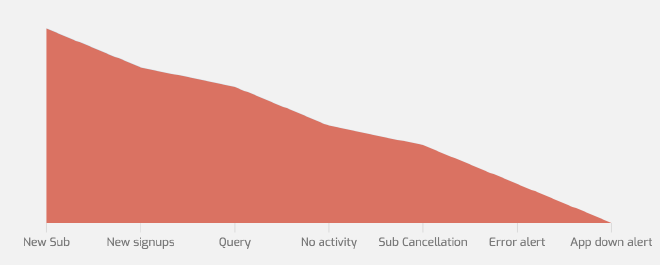Sideprojects are hard
“Subscription canceled!” screamed the email subject. “Query from customer” said the other. Swiping further, “There is a problem with your Ads account” warned the concerning robot, who always tells me to don’t reply.
It starts with the Gmail app, reviewing the new emails, and then to Helpdesk to check the latest customer queries and from there onto reviewing new signups the previous night. The pervasive Todo app makes a cameo in-between.
That’s my morning routine.
Not the Breakfast in the belly, hot coffee by the table routine, No. Bleary-eyed, “the day is about to begin, so finish fast” routine.
It is an excellent day if there are new subscriptions, and a good one if there is not much activity the previous night. From there it gets progressively bad with subscription cancellation alerts and leaps when errors/server alert messages decide to show up.

When you’re operating a business alongside a full-time job, you optimize your day before it even begins.
You review and address what you can and shelve the rest.
For example, for a customer query, you can get away with a quick “I will check and get back to you” message. But for an error alert, you work on it immediately and assess the damage the error has caused, those can’t wait.
I have seen various pieces of advice floating around that advocate for building a business on the side first then taking it full-time as a risk-free, no-brainer solution.
The fact is this route isn’t all roses either. This is a small attempt at showing a glimpse of what is involved in running a sideproject.
What is a Sideproject? #
As is self-explanatory, a sideproject is anything you work on outside of your main day-to-day job (or business).
Sideprojects broadly fall into 3 categories.
Passion projects / Derivation of a hobby where money isn’t a focus.
Projects used for learning new skills.
Miniature businesses that are used or intended to be used by others.
In this post, I mainly refer to the third type, products where you have others outside of your contacts list using your product.
Running a Sideproject #
A typical sideprojector (indiehacker, solopreneur) had to perform many of the following roles for their business.
- Conceptualize new features, and review feature feedback by being a Product manager
- Project manager when planning the features, devising timelines, and allocating work.
- Designer when drawing mockups, toying with the color scheme, or even logo designs.
- A Developer to develop those features, write tests, and maintain the servers.
- Address customer queries and handle incoming requests by donning a Customer support hat.
- Sales & Marketing when thinking about SEO, doing product launches, and talking to customers.
- Accountant while handling invoices and tax compliances.
- And many more…
And to do all of that with a day job (that takes a majority of your time and mental space) is pretty tough. It certainly takes a toll over a long period.
Hardships #
I run RosterBird while employed as a Lead Software engineer full-time. I have to allocate my hours very methodically between my work, personal life, and my project. In conflicts, It’s usually the project that has to take the brunt as I cannot let my project interrupt my day job.
Beyond that following are a few other challenges that you’d have to handle regularly.
- Suboptimal: It is already established the roles you have to perform for running a business individually. And the resources the business is allocated (your time and energy) aren’t going to be the best in class. This leads to suboptimal performance either in your job or in your business. You will never be able to give your 100% for both at the same time and your product most often will be underutilized and handicapped.
- Patience: There will be periods where you will have no external motivations like new subscriptions or good growth. In those periods you need to have belief and persistence to bring yourself to work on the project on an already spent day.
More often doubling down on projects that did not work will do more harm than abandoning them. Burnout is a very serious thing and is almost an endemic among the solopreneur group.
Planning & Efficiency: You are not only constrained by the hours but also by the mental energy. There is a very limited amount of focused work you can do per day before you are drained. When you have spent it, you are spent no matter what the clock dial says. So you have to be very efficient in how you use your time and for what work you do.
For example, on a busy day at work, I usually spend my project hours in review tasks, writing tickets, or reviewing roadmaps. On full of meeting days or weekends, I can use the quota for doing feature development.
Social life: You have just chosen to spend your free time working on projects. This comes at the cost of your social life/family time. When you have kids this becomes tougher by multitudes.
Conclusion #
Starting a business on the side and then gradually going full-time is still put forward by many. It has worked for some, and the survivorship bias portrays it as the only safest way to start a business.
In reality, there are some costs you have to pay and things you do have to give up. What you save up on risk, you pay through other things.
If you were to do it, I would say to have a very real timeline to pursue either to go full-time on it or quit. If you are enjoying it, that is a different story. But be aware this is not the only easiest way to build a business.